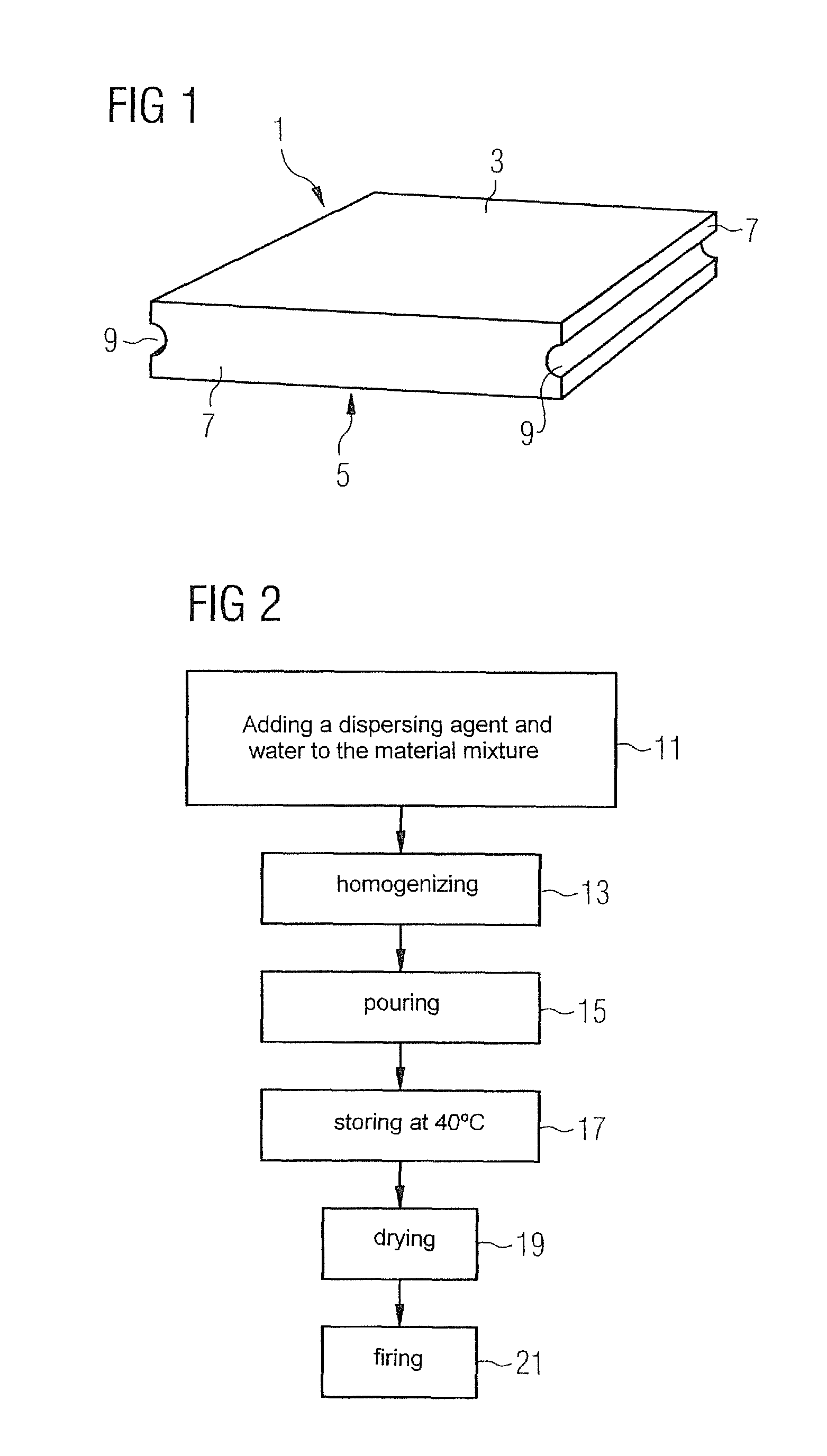Material mixture for producing a fireproof material, fireproof molded body and method for the manufacturing thereof
a technology of fireproof molded body and material mixture, which is applied in the direction of combustion apparatus, continuous combustion chamber, lighting and heating apparatus, etc., can solve the problems of increasing thermal stress, affecting the service life of heat shield elements, and causing cracks to extend ou
- Summary
- Abstract
- Description
- Claims
- Application Information
AI Technical Summary
Benefits of technology
Problems solved by technology
Method used
Image
Examples
Embodiment Construction
[0030]FIG. 1 schematically illustrates a heat shield element for a gas turbine combustion chamber as an example of a refractory molded body according to the invention. The heat shield element 1 shown in FIG. 1 has a hot side 3 facing the interior of the combustion chamber, a cold side 5 facing the supporting structure of the combustion chamber, and four peripheral sides 7. In two of the peripheral sides 7, grooves 9 are present which provide access to a retaining clip attaching the heat shield element 1 to the supporting structure. Self-evidently, other retention options can also be used for which the grooves 9 are unnecessary. For example, the cold side 5 of the heat shield element 1 can be bolted to the supporting structure.
[0031]The heat shield element 1 of a ceramic based on spinel and baddeleyite, i.e. monoclinic zirconium oxide. The spinel group includes a large number of compounds characterized by a common crystal structure type. Spinel is both the individual name of the cubi...
PUM
| Property | Measurement | Unit |
|---|---|---|
| temperatures | aaaaa | aaaaa |
| temperatures | aaaaa | aaaaa |
| temperatures | aaaaa | aaaaa |
Abstract
Description
Claims
Application Information
 Login to View More
Login to View More - R&D
- Intellectual Property
- Life Sciences
- Materials
- Tech Scout
- Unparalleled Data Quality
- Higher Quality Content
- 60% Fewer Hallucinations
Browse by: Latest US Patents, China's latest patents, Technical Efficacy Thesaurus, Application Domain, Technology Topic, Popular Technical Reports.
© 2025 PatSnap. All rights reserved.Legal|Privacy policy|Modern Slavery Act Transparency Statement|Sitemap|About US| Contact US: help@patsnap.com

